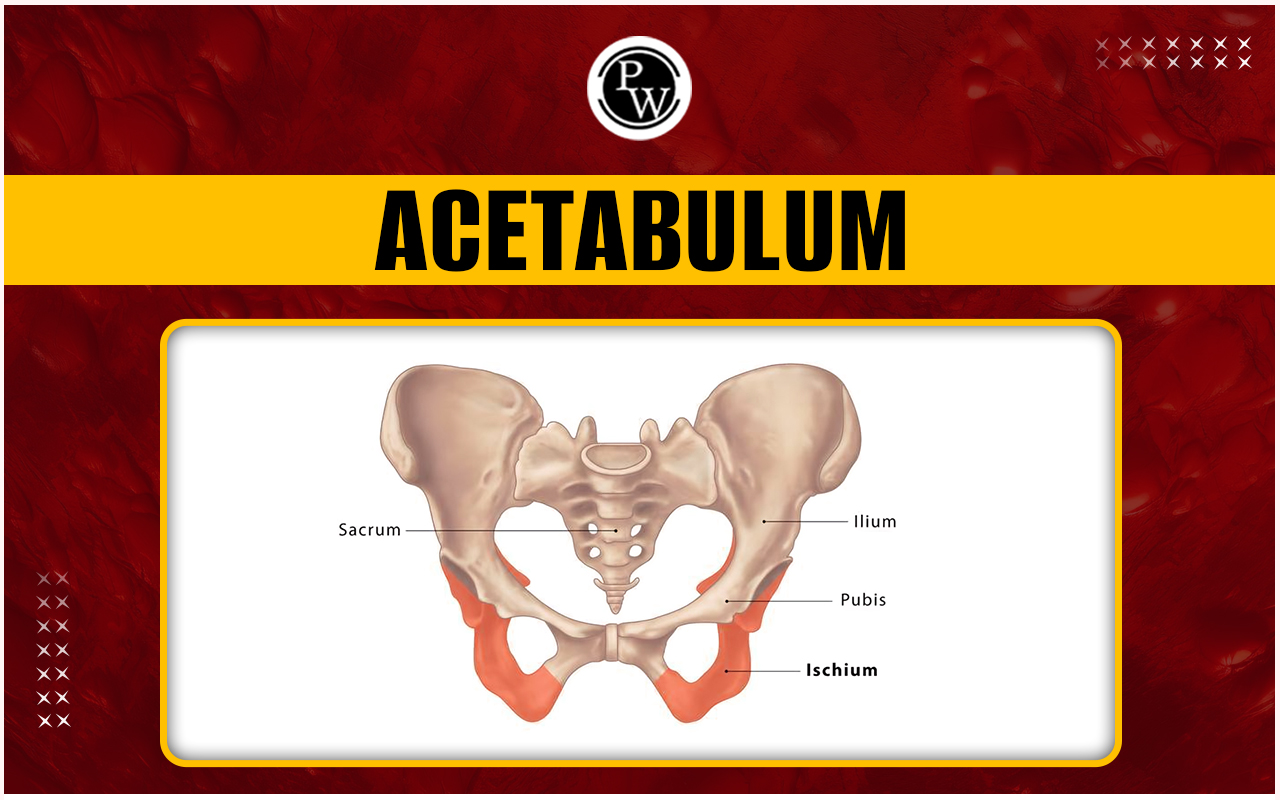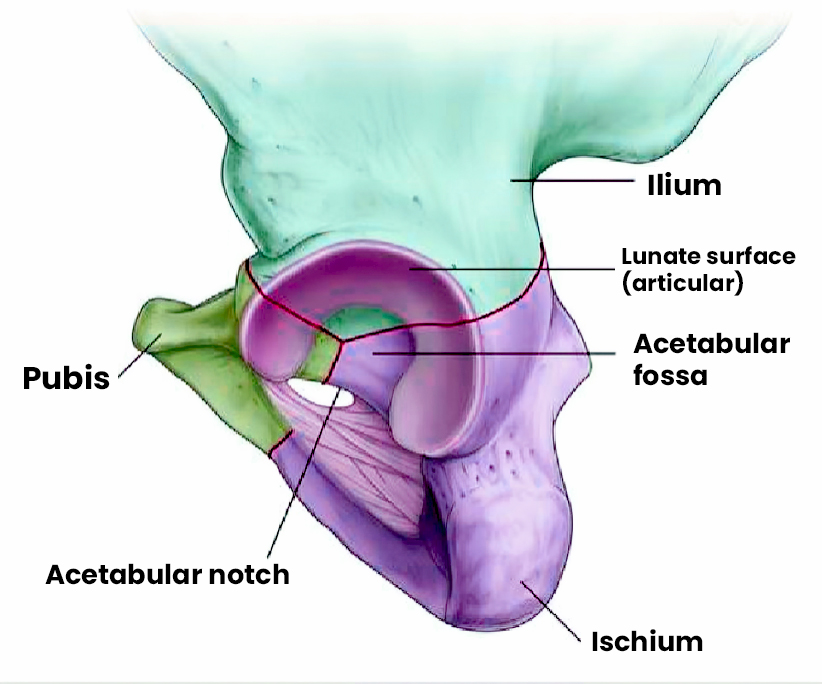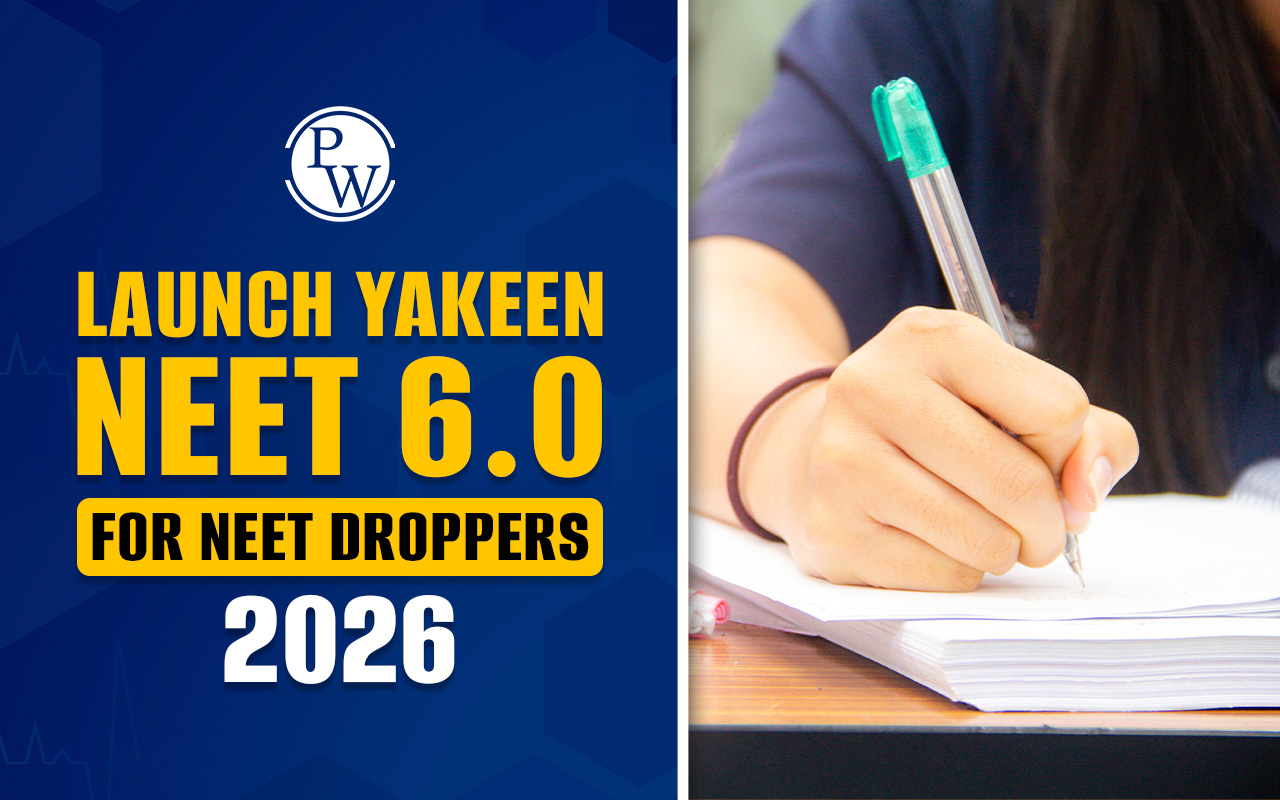

Acetabulum: The acetabulum is a vital part of the skeletal system. It serves as the primary connection point for the femoral head and forms the foundation of the hip joint, which is essential for bearing weight and facilitating movement. Its unique shape and position not only ensure stability in the joint but also allow for a wide range of motion necessary for everyday tasks.
The acetabulum helps distribute forces and reduces the risk of injury while maintaining joint strength. Acetabulum's role goes beyond structural support. It represents the delicate balance between stability and mobility. It is required for sustaining efficient walking and overall musculoskeletal well-being. The article below details NEET Biology Notes about the acetabulum.Acetabulum Diagram
The following is the diagram of the acetabulum:
Sexual Reproduction in Flowering Plants
Acetabulum Anatomy
The acetabulum is located in the pelvic bone. It connects with the femoral head to form the hip joint, which is vital for mobility and stability. It is essential to understand the acetabulum anatomy. It includes its shape and structure and its role in articulating with the femoral head, which is vital for comprehending its significance in maintaining joint integrity and supporting movement. The complete anatomy of the acetabulum is as follows:- Location within the Pelvis: The acetabulum is found in the pelvic bone, specifically in the os coxae and is composed of the ilium, ischium, and pubis. It is positioned at the meeting point of these pelvic bones. It forms the primary socket for the femoral head, establishing the hip joint.
- Shape, Structure, and Compone nts: The acetabulum boasts a distinct concave, cup-like shape designed to fit the spherical femoral head snugly. Its structure contains essential components, including the acetabular fossa, a central depression, and the acetabular labrum, a rim of fibrocartilage encircling its edge. These features enhance stability and provide cushioning that ensures smooth movement and even distribution of forces within the joint.
- Importance of Articulation with the Femoral Head: The connection between the acetabulum and the femoral head is essential for forming the hip joint and vital for human movement. This articulation permits a wide range of motions that include bending, stretching, moving the leg away and towards the body, and rotating the hip.
Functions of Acetabulum
Acetabulum is essential for the hip joint's function. It is vital for human movement and stability. It provides support for weight-bearing, facilitates smooth movement, and maintains joint health. The functions of the acetabulum are given below.- Role in Weight-Bearing and Locomotion: The acetabulum provides essential support for the body's weight during activities like standing and walking. It ensures that forces generated during movement are effectively managed, promoting stability and reducing strain on the joint.
- Facilitation of Stability and Mobility: The acetabulum's shape and structure create a secure fit for the femoral head and enhance joint stability. The acetabular labrum adds further support by deepening the socket, which helps to prevent dislocation and maintain mobility.
- Contribution to Force Distribution: During movement, the acetabulum distributes forces evenly across the hip joint, minimizing stress on specific areas. This even distribution of forces reduces the risk of injury and helps preserve joint health over time.
Clinical Relevance of Acetabulum
Acetabulum is sensitive to various injuries and conditions that can significantly affect an individual's quality of life. These clinical aspects are essential for healthcare professionals to diagnose and treat acetabular issues effectively. The detailed Clinical Relevance of Acetabulum is explained below.Common acetabular injuries and conditions
Acetabular fractures and dysplasia are prevalent conditions affecting the acetabulum. Fractures usually result from traumatic incidents, while dysplasia involves abnormal acetabular development, leading to structural deformities and increased joint instability.- Acetabular fractures: These fractures occur due to severe trauma, such as motor vehicle accidents or falls, leading to misalignment or displacement of the acetabulum.
- Acetabular dysplasia: This condition involves abnormal acetabular development, resulting in shallow or improperly formed sockets, which can increase the risk of hip instability and osteoarthritis.
| Important NEET Biology Notes | ||
|---|---|---|
| Selaginella | Embryo | Malvaceae |
| Pinus | Polyembryony | Volvox |
Diagnostic techniques for evaluating acetabular health
Accurate diagnosis is vital to assess the extent and nature of acetabular injuries or conditions. Healthcare providers use various diagnostic methods, including Magnetic Resonance Imaging (MRI), X-ray, and Computed Tomography (CT) scans, to evaluate bone integrity, soft tissue damage, and overall joint health.- Magnetic Resonance Imaging (MRI): MRI scans provide detailed images of soft tissues, aiding in the detection of labral tears, cartilage damage, and other soft tissue injuries.
- X-ray: X-rays are commonly used to examine bone structure and alignment, facilitating the diagnosis of fractures, dysplasia, and degenerative changes in the acetabulum.
- Computed Tomography (CT) scan: CT scans offer three-dimensional images of the acetabulum, assisting in the evaluation of fractures, bone abnormalities, and complex acetabular injuries.
| Important NEET Biology Notes | ||
|---|---|---|
| Chara | Funaria | Apomixis |
| Rhizopus | Spirogyra | Bacteriophage |
Treatment options for acetabular injuries and disorders
Once diagnosed, acetabular injuries and disorders require appropriate management strategies formulated for the individual's condition. Treatment options may include conservative approaches like rest and physical therapy or surgical interventions such as open reduction internal fixation (ORIF), periacetabular osteotomy (PAO), or total hip replacement (THR), depending on the severity and nature of the condition.- Non-surgical approaches: Conservative methods like rest, physical therapy, and pain management techniques are employed to alleviate symptoms and enhance function.
- Surgical interventions: In cases of severe acetabular fractures or dysplasia, surgical procedures such as open reduction internal fixation (ORIF), periacetabular osteotomy (PAO), or total hip replacement (THR) may be necessary to restore joint stability, correct deformities, and relieve pain.
| NEET Exam Important Links | |
|---|---|
| NEET Biology Syllabus | NEET Biology Diagrams |
| NEET Biology MCQ | NEET Biology Chapter wise Weightage |
| NEET Biology Notes | NEET Previous Year Question papers |
Acetabulum FAQs
Q 1. What is the primary function of the acetabulum?
Ans. The acetabulum acts as a socket in the hip, linking with the femoral head to form the hip joint, allowing movement.
Q 2. How is the acetabulum fixed?
Ans. Acetabular fractures are commonly addressed surgically, often utilizing open reduction and internal fixation (ORIF) to realign and stabilize bone fragments.
Q 3. What three bones make up the acetabulum?
Ans. The acetabulum consists of the ilium, ischium, and pubis bones, positioned anteriorly and caudally within the pelvis.
Q 4. What causes acetabulum pain?
Ans. Acetabulum pain may stem from hip impingement, where the femoral head presses against the acetabulum. It causes damage to the labrum, resulting in stiffness, discomfort, and potential arthritis.
🔥 Trending Blogs
Talk to a counsellorHave doubts? Our support team will be happy to assist you!

Check out these Related Articles
Free Learning Resources
PW Books
Notes (Class 10-12)
PW Study Materials
Notes (Class 6-9)
Ncert Solutions
Govt Exams
Class 6th to 12th Online Courses
Govt Job Exams Courses
UPSC Coaching
Defence Exam Coaching
Gate Exam Coaching
Other Exams
Know about Physics Wallah
Physics Wallah is an Indian edtech platform that provides accessible & comprehensive learning experiences to students from Class 6th to postgraduate level. We also provide extensive NCERT solutions, sample paper, NEET, JEE Mains, BITSAT previous year papers & more such resources to students. Physics Wallah also caters to over 3.5 million registered students and over 78 lakh+ Youtube subscribers with 4.8 rating on its app.
We Stand Out because
We provide students with intensive courses with India’s qualified & experienced faculties & mentors. PW strives to make the learning experience comprehensive and accessible for students of all sections of society. We believe in empowering every single student who couldn't dream of a good career in engineering and medical field earlier.
Our Key Focus Areas
Physics Wallah's main focus is to make the learning experience as economical as possible for all students. With our affordable courses like Lakshya, Udaan and Arjuna and many others, we have been able to provide a platform for lakhs of aspirants. From providing Chemistry, Maths, Physics formula to giving e-books of eminent authors like RD Sharma, RS Aggarwal and Lakhmir Singh, PW focuses on every single student's need for preparation.
What Makes Us Different
Physics Wallah strives to develop a comprehensive pedagogical structure for students, where they get a state-of-the-art learning experience with study material and resources. Apart from catering students preparing for JEE Mains and NEET, PW also provides study material for each state board like Uttar Pradesh, Bihar, and others
Copyright © 2025 Physicswallah Limited All rights reserved.
Get App











